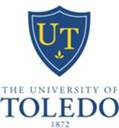We are currently raising funds for our chapter to do a water project in Honduras. The project will cost roughly $25,000 and we are in the midst of much fundraising. Here is some info about the project:
LOS SANCHEZ, HONDURAS WATER SUPPLY & SANITATION PROJECT INTRODUCTION
Engineers Without Borders (EWB), through The University of Toledo chapter (EWB-UT) has undertaken the responsibility to develop a Water Supply Project for the Village of Los Sanchez, Honduras. To this regard, a few members of the chapter conducted an assessment trip to the Village during the week of May 4, 2008. The objective was to compile basic information needed for designing the system and to assess the overall sanitation needs of the community.
The Village of Los Sanchez is located within the Municipality of Orocuina, in the Department of Choluteca, Honduras and approximately 15 miles north of the City of Choluteca (Figure 1). The Village is very organized with a strong sense of unity, and there is indication that the community has been exposed to (and adopted) basic health/sanitation practices.
The high level of organization within the community was one of the reasons why Los Sanchez was selected for this project. For over 7 years, the community has been conducting efforts to obtain clean water supply. They have created a Water Board that has negotiated the rights to obtain water from a nearby spring and for right-of-way for the conduction line.
Information provided by the Health Department of Orocuina indicates that as of 2006 there were 29 residences occupied by 156 inhabitants (83 female, 73 male), for an average of 5.3 inhabitants per residence. Approximately 58% of the population (90 youths) are less than 19 years or younger, with children under 12 years old being the highest demographic.
Relations between EWB-UT and the Village of Los Sanchez were originally established via a personal contact working in the Peace Corps in Orocuina. This contact also established relations between EWB-UT and the mayor’s office of Orocuina, which helped provide transportation, food, and housing during the assessment trip. During the assessment trip, members of the chapter met with other Peace Corp volunteers stationed in the area to keep a very strong connection with the community of Los Sanchez.
None of the residences have any basic infrastructure such as electric light, potable water, or even latrines. Most residences only have one room that serves the entire need of the household (living room, sleeping quarters and kitchen). Due to the lack of latrines, basic sanitation is performed outdoors beyond the limits of the Village. Cooking is performed indoors with wood-burning makeshift clay stoves. The stoves are not equipped with chimneys and the walls of their homes are coated with soot. As a result, smoke inhalation is another health issue of concern.
Garbage is usually separated with organic matter (usually food waste) composted to be used as fertilizer. Other garbage is burned by each household at a designated location.
Currently, the Village obtains its water supply from a small stream that flows in a narrow valley below the village. The water thus obtained is used for their basic needs including drinking water. Water used for drinking is often strained with a cloth and stored in covered earthen (clay) jars. Washing and bathing is performed in the Creek. The task of fetching water for the household is the duty of the women and children. This implies 5 to 6 trips to the river, and in some instances, even more. Depending on the location of the residence, each trip can be one quarter to half a mile, over steep rocky terrain.
Most significantly, there is not one single point from where the entire village obtains its drinking water supply. Therefore, it may not be uncommon for one family to obtain their drinking water downstream of where another may be washing or bathing.
PROPOSED WATER SUPPLY
The proposed water supply for the EWB-UT project is a small spring located approximately ¾ miles southwest and 320 feet above the Village. Measurements conducted during the assessment trip estimated the volume to be 34.1 gpm, of which 29.9 gpm were obtain from the main spring, and 4.2 gallons from a small adjacent source. A previous measurement conducted by a Peace Corps volunteer approximately a few days earlier estimated the flow at 15.7 gpm. However, he admitted that he was not able to capture the entire flow emanating from the main spring. Also, he did not measure the adjacent spring.
Also to be taken into consideration is that there was precipitation a few days before the measurement was conducted during the assessment trip. This may also account in part for the higher flow observed. Nonetheless, considering that the measurements were made in summer (dry season) and as a conservative approach, the minimum flow at the spring will be assumed as 20.0 gpm.
We're back in Delaware. THANKS TO ALL!
11 years ago


No comments:
Post a Comment